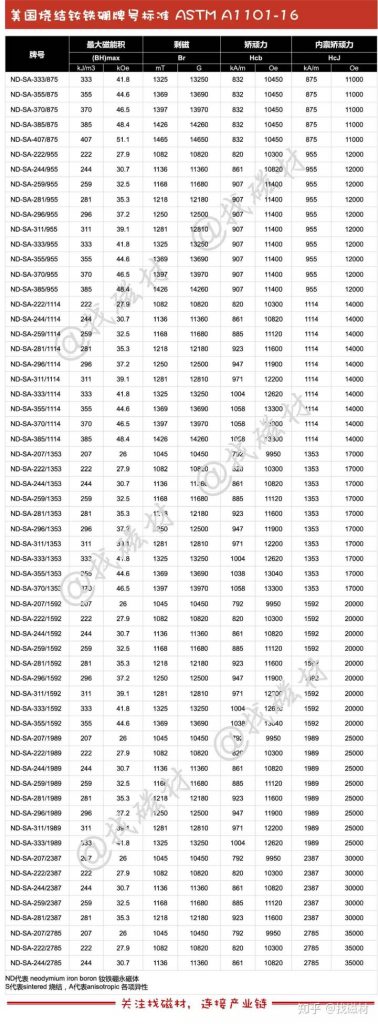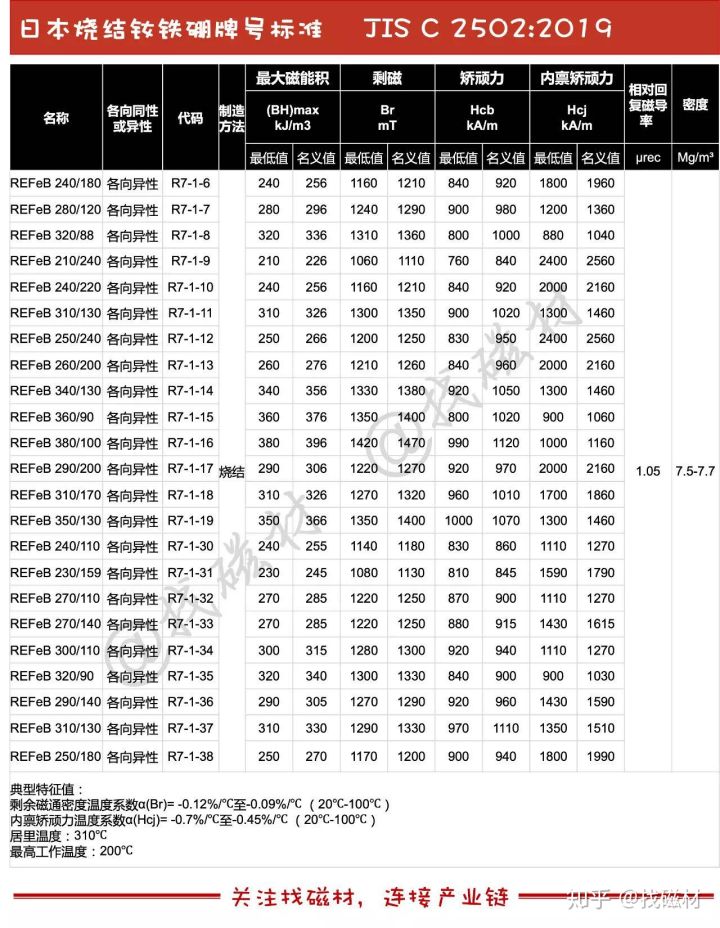Sintered NdFeB Global Standards Standards Summary and Comparison
Sintered NdFeB is a “magnetic king” with a wide range of applications in magnetic materials, superior magnetic properties, and high-cost performance. It is widely used in industry, manufacturing, and high-tech industries. China is the world’s largest producer and exporter of sintered NdFeB. In 2018, China’s sintered NdFeB raw material output was about 155,000 tons. The annual export of NdFeB magnetic materials was about 33,000 tons, and it was exported to 100 of the world’s six continents. Many countries, including Germany, Japan and the United States are the largest exporters of rare earth permanent magnets in China.
So you can buy large neodymium magnets or micro neodymium magnets in China. And it is very easy to buy customs magnets from China neodymium magnet factories,
Sintered NdFeB is widely used in the world, and countries have different regulations on the grade and performance requirements of Sintered NdFeB. Today I will take you to understand the requirements of our major trading countries for the national standards of Sintered NdFeB .

Globally, the mainstream international standard for sintered NdFeB is IEC 60404-8-1 specified by the International Electrotechnical Commission (IEC) organization. The current latest version is the 2015 version. The articles comparing the standard of iron boron grades are still using the 2005 edition or even the 1998 edition. Please pay special attention to the time limit of the edition) IEC is the earliest established international standardization organization for electrical engineering in the world and one of the three major standards organizations in the world (the other two are ISO and ITU).
The EU standard for sintered NdFeB is basically the same as the IEC standard. Britain, Germany and other countries all use the EU standard EN 60404-8-1: 2015, but the standards of various countries have some adjustments in the file format and language used, such as the UK The standard is BS EN 60404-8-1: 2015, and the German standard is DIN EN60404-8-1: 2015.

The current national standard for sintered NdFeB is GB / T 13560-2017, which was issued by the General Administration of Quality Supervision, Inspection and Quarantine and the National Standardization Management Committee, and will be implemented in May 2018. There are also 1992, 2000 and 2009 versions in history, which are now abolished. The normative quotation documents disclosed in the national standard for sintered NdFeB in our country do not contain the international standards of IEC, that is to say, although China is also a member of IEC, our national NdFeB standard formulation mainly considers the domestic status and Usage habits, no reference to international standards.

The United States uses both IEC 60404-8-1: 201 and ASTM A1101-6-16. ASTM is an abbreviation of American Society for Testing and Materials. In addition, the United States also uses the NdFeB standard specified by the MMPA Magnetic Materials Production Association and the IEEE Institute of Electrical and Electronics Engineers.

The current national standard for sintered NdFeB in Japan is JIS C 2502: 2019 issued by the Japan Institute of Technology and the Japan Standards Committee. The standard is formulated with reference to the IEC standard, but there are more brands with higher performance than the IEC standard, excluding some IEC The lower performance grade in the standard.

Now that we have found the sintered NdFeB standards of our main trading countries, we might as well put them together for a comparison. Products of different grades are put into the coordinate system in turn. You can find many interesting conclusions by comparing in the figure.

Among the national standards, the most product grade is the American ASTM standard, followed by China’s GB / T 13560-2017; and the least number of grades is the IEC international standard.
From the perspective of performance requirements, China’s standards are relatively close to the American ASTM standards. Under the same intrinsic coercive force, the remanence requirements of our products are higher. There is no brand similar to the performance of China’s TH series sintered NdFeB in IEC international standards and Japanese national standards.
The content from https://zhuanlan.zhihu.com/p/183164527
